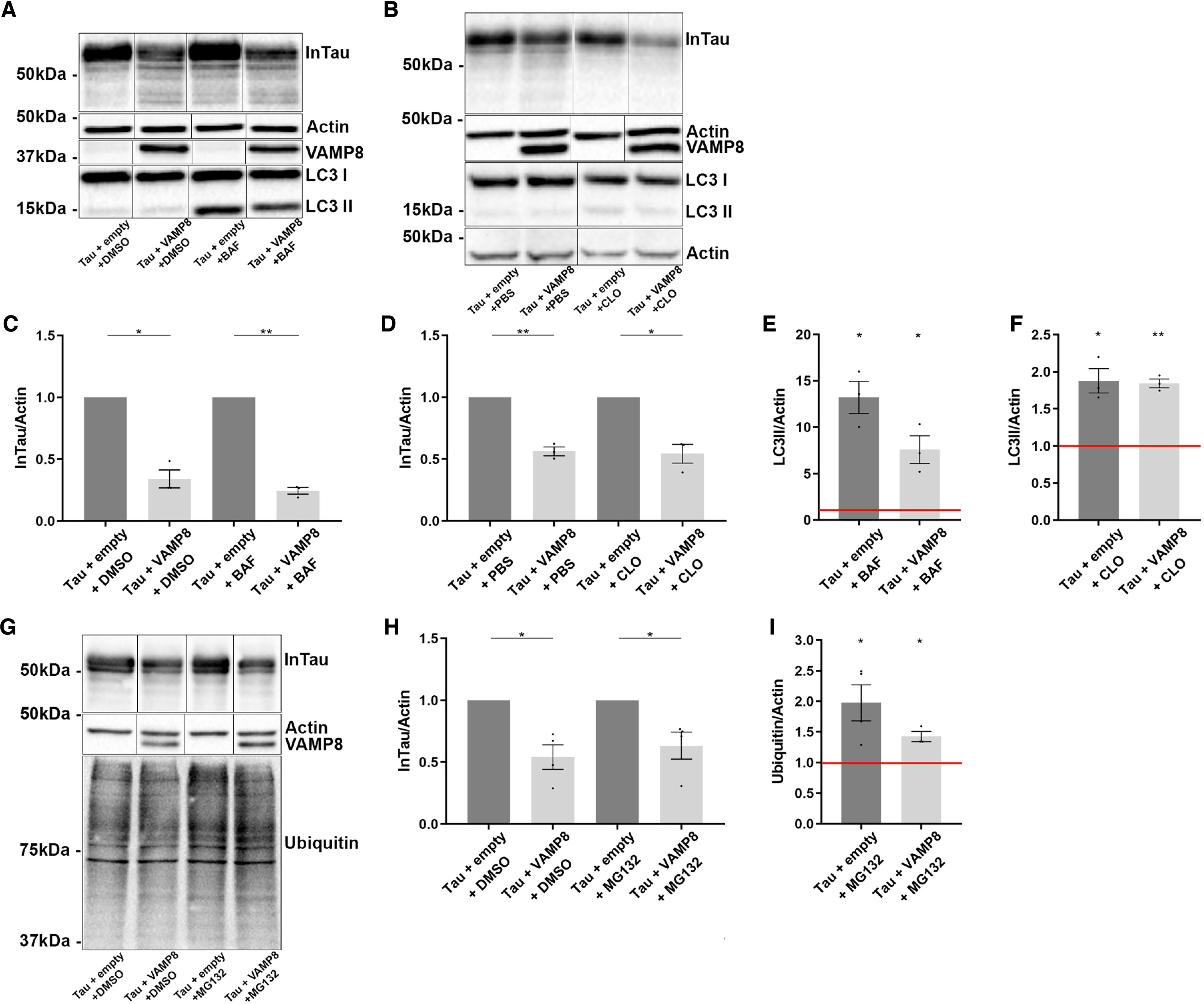Figure 2.

The decrease of intracellular tau upon VAMP8 overexpression is not caused by its degradation but rather by its secretion. N2a cells overexpressing either Flag-4R-TAU and EGFP-empty plasmids or Flag-4R-TAU and GFP-VAMP8 plasmids were treated either with bafilomycin (BAF) or chloroquine (CLO) to block autophagy and MG132 to inhibit the proteasome. A and B, Western blotting analysis with the antibody A0024 of the cell lysate revealed that no increase of InTau was noted when the cells were treated either with BAF or CLO. C and D, densitometry analysis of the A0024 signal of InTau in cells treated either with BAF (DMSO as control) or CLO (PBS as control). E and F, densitometry analysis of the LC3II signal in cells treated either with BAF or CLO. The efficacy of BAF and CLO was demonstrated by an increase of LC3II in the cell lysate compared with control conditions (red bar). G, Western blotting analysis with the antibody A0024 of the cell lysate revealed that no increase of InTau was noted when the cells were treated with MG132. H, densitometry analysis of A0024 signal of InTau in cells treated either with MG132 or DMSO (control). I, densitometry analysis of ubiquitin signal in cells treated either with MG132 or DMSO. The efficacy of MG132 was shown by an increase of ubiquitin staining compared with the control condition (red bar). Black frames were used to mark the splice sites of immunoblot images. Data represent scatter plot and mean ± S.E., minimum n = 3. Each dot corresponds to a n. *, p < 0.05; **, p < 0.01.
